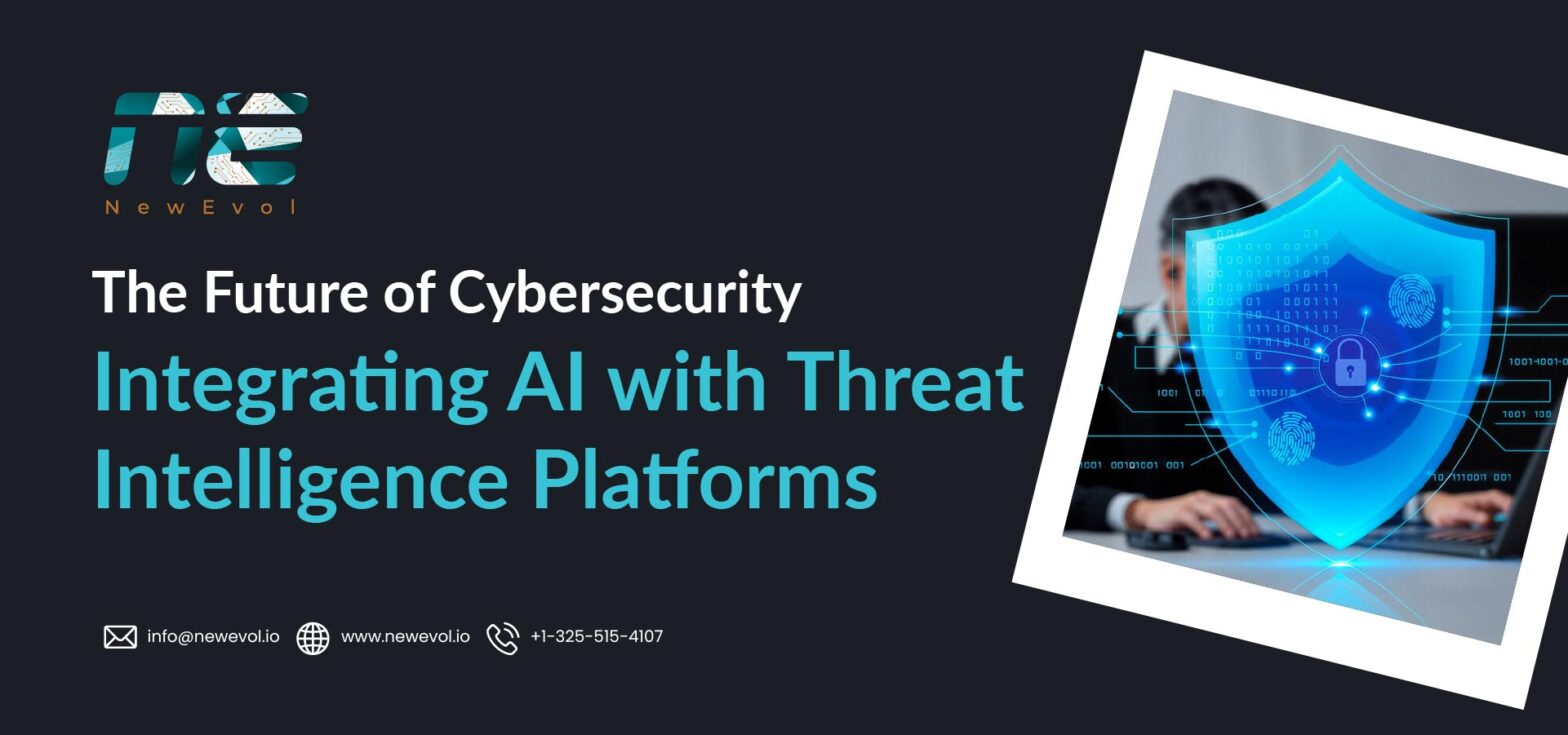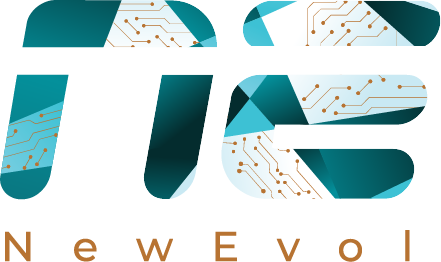The Future of Cybersecurity: Integrating AI with Threat Intelligence Platforms

Cyber threats aren’t slowing down, they’re getting sharper, sneakier, and sometimes even using AI themselves. Traditional defenses? They try hard, but let’s be honest, manual monitoring and outdated rules can’t always keep pace.
That’s where AI working with Threat Intelligence Platforms (TIPs) steps in. AI spots patterns you’d probably miss, reacts in real time, and makes threat data smarter. TIPs already gather and enrich intel, so when you add AI to the mix, you don’t just respond faster, you predict attacks before they happen.
In this blog, we’ll explore how AI + TIP is shaping the future of cybersecurity and why it’s more necessity than hype.
What Is a Threat Intelligence Platform (TIP)?
Threat Intelligence Platform (TIP) is the control room of your cybersecurity setup. It collects data from all sorts of sources… dark web, open web, security feeds, logs and then organizes it in a way that actually makes sense. Instead of drowning in random alerts and raw data, a TIP tells you: “Here’s what matters, here’s why, and here’s what you should probably do about it.”
At its core, a TIP helps:
- Aggregate threat data from multiple feeds
- Enrich it with context so it’s not just noise
- Correlate patterns to spot suspicious activity
- Distribute intel to your SOC tools and teams
Basically, it transforms overwhelming data into actionable intelligence. Without a TIP, most SOC teams spend way too much time chasing false alarms or Googling threat indicators. With a TIP, you get a single pane that not only centralizes intel but also makes decision-making faster and sharper.
Where AI Supercharges a TIP (End-to-End Pipeline)
We know a Threat Intelligence Platform (TIP) is great at pulling data together, but here’s the catch—it still relies a lot on human eyes and manual rules. That’s where AI slides in and changes the game.
Think of it as adding a turbo-engine to the pipeline. Here’s how the flow usually works when AI joins the party:
- Data Collection → AI helps sort the junk from the gold.
Instead of treating every IP, domain, or log as “urgent,” AI models can flag what looks actually risky versus what’s just noise.
- Normalization & Enrichment → Smarter context.
AI doesn’t just attach generic tags. It looks at patterns, historical incidents, even industry-specific risks, and adds meaningful insights that a human analyst might miss at 3 a.m.
- Correlation & Detection → Spotting the sneaky stuff.
Here’s the fun part—AI connects dots humans wouldn’t even think to connect. That “random login attempt” from one source and that “odd DNS query” from another? AI can tell you they’re part of the same campaign.
- Response Suggestions → No more blank stares.
Instead of analysts scratching their heads, AI can recommend actions: block this IP, isolate that endpoint, escalate to your SOC manager. Basically, it gives you a head start.
- Continuous Learning → Better every single day.
Unlike static rules, AI learns from past attacks, new malware families, and even mistakes. Over time, it becomes sharper, faster, and harder for attackers to outsmart.
AI Threats & Governance, You Must Consider
Before we get too hyped about AI making Threat Intelligence Platform smarter, let’s be honest—it’s not all sunshine. AI brings its own set of headaches. If you don’t think about them, you’re just swapping one risk for another.
1. Bad Data, Bad Results
AI learns from data. If that data is biased, messy, or just plain wrong, your AI will make bad calls. You might end up blocking good traffic or missing real threats.
2. Hackers Know How to Play It
Attackers are crafty. They can trick AI models with poisoned data or weird patterns. So your fancy TIP might get fooled into letting threats slide.
3. Too Much Blind Trust
Automation feels great—less manual work, faster response. But if your team starts trusting AI blindly, small mistakes can blow up big. AI should support people, not replace them.
4. Privacy Trouble
AI needs data to work, but sometimes that data includes sensitive stuff. If you don’t handle it right, you could end up breaking compliance rules or privacy laws.
5. No Clear Explanations
One of the biggest issues—AI can be a black box. If you can’t explain why it flagged something or ignored it, good luck in an audit or explaining it to management.
Reference Architecture: AI-Enhanced TIP in the SOC Stack
So how does this look in the SOC world? Picture your Threat Intelligence Platform not as a standalone tool, but as the brain that plugs into the rest of your security stack. When AI gets added on top, the flow looks something like this:
Data Ingestion Layer
Logs, threat feeds, dark web chatter, malware signatures—everything gets pulled in here. AI helps clean it up, normalize formats, and enrich context before it even hits the analyst’s desk.
AI Analytics Engine
This is where the magic happens. Machine learning models sift through the noise, find patterns humans miss, and flag high-risk activity. Think anomaly detection, clustering similar IOCs, or predicting attacker behavior.
TIP Core
The TIP acts like a central hub—organizing, scoring, and distributing intelligence. With AI in the mix, it’s not just storing intel but also ranking what matters most and suggesting response playbooks.
Integration with SIEM & SOAR
The enriched intel flows into SIEM for correlation and SOAR for automation. Instead of drowning in thousands of alerts, SOC teams get prioritized, actionable insights with suggested actions.
Human Analyst Layer
At the end of the chain, people still matter. Analysts validate AI recommendations, tune models, and make final calls. The AI-TIP just gives them a huge productivity boost.
High-Impact Use Cases
Let’s move from theory to reality, where does an AI-powered TIP actually make a difference? Here are a few scenarios that SOC teams care about (with numbers attached, not just fancy words):
1. Faster Threat Detection
Instead of waiting hours (or days) for analysts to manually connect dots, AI models can correlate fresh intel with SIEM alerts in minutes. Many orgs report 40–60% faster detection when AI is layered into their TIP workflows.
2. Reduced False Positives
Noise is the enemy. AI-driven scoring and contextual enrichment cut the clutter—leading to a 30–50% drop in false positives. That means analysts spend more time on actual threats, less time chasing shadows.
3. Smarter Threat Prioritization
Every SOC struggles with “alert fatigue.” AI-enhanced TIPs can auto-rank threats based on risk, attack surface, and likelihood of exploitation. Result? Teams see up to a 2x improvement in prioritization accuracy, so the right alerts hit the top of the pile.
4. Automated Incident Response
When paired with SOAR, TIP + AI can trigger playbooks automatically—blocking IPs, updating firewalls, isolating endpoints. This has shown to reduce response times by 70% in some SOC environments.
5. Proactive Threat Hunting
Instead of waiting for alerts, AI models spot suspicious patterns early—sometimes predicting potential compromises before they escalate. Companies using TIPs this way have seen 25–35% more threats uncovered proactively.
Implementation Roadmap
Rolling out an AI-powered TIP isn’t about buying a shiny box and plugging it in. To get real value, SOCs should treat it like a phased journey:
1. Define Objectives First
Don’t start with tech—start with outcomes. Is the goal faster detection, fewer false positives, or automated response? Clear goals shape the rollout.
2. Data Foundation
AI thrives on quality data. Integrate log sources, threat feeds, and enrichment data into your TIP. Clean, structured data = smarter models.
3. AI Layer Integration
Deploy AI models on top of your TIP. Start with supervised learning (classification, enrichment) and gradually expand to unsupervised methods for anomaly detection.
4. SOC Stack Alignment
Hook the TIP into SIEM, SOAR, and endpoint tools. Make sure intel isn’t just collected—it flows into detection rules, playbooks, and dashboards.
5. Pilot & Tune
Run a controlled pilot with a subset of data. Measure impact: detection speed, false positives reduced, analyst hours saved. Refine before scaling.
6. Scale & Automate
Expand coverage across the SOC. Automate playbooks where possible, but keep human-in-the-loop for high-impact decisions.
7. Governance & Feedback Loops
Set up oversight for model performance and bias. Continuously retrain models with fresh intel and analyst feedback.
KPIs & Success Metrics
Measuring success is key—otherwise, how do you know if your AI-powered TIP is actually helping? Here are the main metrics SOCs should track:
1. Time-to-Operationalize Intel (TTOI)
How quickly threat indicators from the TIP get into actionable tools like SIEM or SOAR. Faster = better situational awareness.
2. False Positive Reduction
AI should help cut noise. Track the % of alerts flagged incorrectly before vs. after AI integration. A drop of 30–50% is a good benchmark.
3. Mean Time to Detect & Respond (MTTD/MTTR)
How long it takes to detect a threat and take action. AI-driven TIPs often reduce these times by 40–60%.
4. Automated Actions vs Analyst Overrides
Track how many recommendations the AI executes automatically vs. how many need human review. This helps gauge trust in the system and workflow efficiency.
5. Coverage of Threat Actors & TTPs
Measure how well your TIP + AI maps observed activity to known attacker behaviors (MITRE ATT&CK, MITRE ATLAS). The broader the coverage, the better prepared your SOC.
6. Analyst Productivity Gains
AI should free up analysts from repetitive tasks. Track hours saved on triage, enrichment, and correlation work.
Common Pitfalls (and How to Avoid Them)
Even the fanciest AI-powered TIP can hit bumps if you’re not careful. Here are some common traps and how to sidestep them:
1. Blindly Trusting AI
AI is smart, but it’s not perfect. If you just let it make decisions without human checks, mistakes can snowball. Fix: Keep analysts in the loop, set confidence thresholds, and review automated actions regularly.
2. Over-Collecting Data
More data isn’t always better. Flooding the TIP with unfiltered feeds creates noise and slows processing. Fix: Focus on high-quality, relevant sources and use AI to filter duplicates and low-value intel.
3. Ignoring AI Security
Hackers can target your AI models themselves—through data poisoning, adversarial inputs, or model theft. Fix: Implement AI security best practices, test models regularly, and monitor for anomalies in AI outputs.
4. Skipping Governance & Documentation
No audit trail or model documentation? That’s a recipe for compliance headaches. Fix: Maintain model cards, logs of training data, retraining schedules, and human oversight policies.
5. Treating TIP as “Set and Forget”
Threat landscapes evolve fast. If your TIP isn’t continuously updated and tuned, it becomes stale. Fix: Regularly update feeds, retrain models, and incorporate feedback from SOC analysts.
NewEvol POV: What “Good” Looks Like
So, what does a well-oiled AI-powered TIP setup actually look like in the real world? At NewEvol, we think of it like a four-part ecosystem that just clicks:
1. Unified Data & Integrations
All intel—internal logs, threat feeds, sandbox outputs, OSINT—flows into a single TIP. No silos, no gaps. Everything is normalized, enriched, and ready for analysis.
2. AI-Assisted Workflows
Analysts get smart suggestions, anomaly detection, and predictive insights, but they’re never fully replaced. The AI handles the heavy lifting—ranking threats, stitching campaigns, auto-suggesting playbooks—so humans can focus on decisions that matter most.
3. Automation with Oversight
Integration with SIEM, SOAR, and endpoint tools means repetitive actions—blocking IPs, isolating endpoints, quarantining files—can be automated. But it’s all governed, with human review for high-impact decisions.
4. Governance & Compliance Built-In
Every AI model and TIP process is auditable, explainable, and aligned with regional regulations. Feedback loops constantly improve detection accuracy and reduce risk of errors.
Final Word
Cyber threats aren’t waiting around, and neither should your defenses. AI-powered TIPs aren’t just tools… they’re your SOC’s secret weapon, connecting dots, spotting patterns, and throwing up alerts way before you’d even notice them. But heads up: AI isn’t some magic wand. You gotta have checks, governance, and humans in the loop. Skip that, and you’re just rolling dice.
You get faster detection, fewer false alarms, smarter analysts, and a SOC that actually keeps up with attackers. The way NewEvol making security work smarter, not harder.
FAQs
1. What is the future of cybersecurity with AI?
AI will make cybersecurity faster, smarter, and more predictive. It helps detect threats early, reduce false positives, and automate repetitive tasks so analysts can focus on real risks.
2. What is AI in cyber threat intelligence?
AI in threat intelligence uses machine learning and analytics to process massive data, spot patterns, predict attacker behavior, and provide actionable insights to SOC teams.
3. What is the future of threat intelligence?
Threat intelligence will become more automated, AI-driven, and integrated across security tools, enabling organizations to proactively detect, prioritize, and respond to threats.
4. How to integrate AI in cybersecurity?
Start by connecting AI models to TIPs, SIEM, and SOAR platforms, enrich threat data, automate repetitive actions, and ensure human oversight for high-impact decisions.

